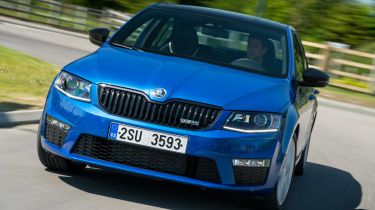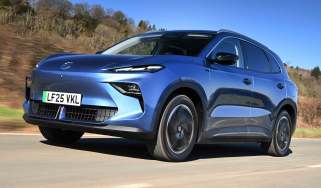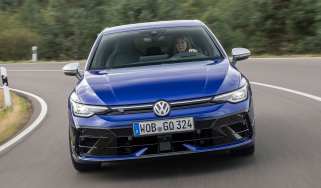Skoda Octavia vRS 2.0 TDI
Skoda Octavia vRS diesel blends performance and practicality better than ever before

The Octavia vRS TDI is a real jack of all trades. Its potent diesel engine and sharpened handling are enough to keep most with an interest in driving happy, but it won’t cost huge amounts to run. It’s £2,680 less expensive than a Golf GTD and retains the Octavia’s roomy interior and spacious boot. And while it’s a little on the subtle side, and is £885 more expensive and less economical than the Leon, as a true all-rounder, the vRS is hard to beat.
The Skoda Octavia vRS diesel is built on the VW Group's new MQB platform and follows close on the heals of the VW Golf GTD and the top-spec diesel-powered SEAT Leon FR.
The 154mph petrol vRS is the headline-grabber, as it’s now the fastest Octavia Skoda has ever built. But it’s the diesel that’s set to be the bigger seller, particularly now its CO2 emissions have dropped low enough to appeal to fleet buyers.
The Octavia vRS’ blend of blending practicality and performance has always gone down well in the UK, as around 20 per cent of Octavias sold here are vRS models, compared to an average of seven per cent across all markets.
Used - available now

2020 Peugeot
3008
49,383 milesAutomaticPetrol1.2L
Cash £15,500
2022 Kia
e-Niro
44,251 milesAutomaticElectric
Cash £14,200
2021 Nissan
Leaf
22,205 milesAutomaticElectric
Cash £10,000
2020 Volvo
XC60
16,730 milesAutomaticPetrol2.0L
Cash £25,990See also
The vRS has always been a pretty conservative looker and this new one carries on that trend. Setting it apart from the rest of the range is a new front bumper with a low central air intake, flanked by a pair of dummy intakes to help add extra visual width. Above these are two triangular ticks which catch the light, and the eye, and add some extra interest to the car’s fairly low-key look.
The Octavia rides on 18-inch rims as standard, with 19s as an option for the first time on the vRS, while the rear gets a sharp-looking boot spoiler that generates 30kg of downforce at top speed. There’s also a new rear bumper, which features a pair of exhaust tailpipes and a red reflector strip which runs almost the whole width of the car’s back end. This helps make sure the car stands out from its lesser-powered siblings when driving at night.
Inside, there’s some nicely supportive sports seats, although tall drivers might find that they can’t drop them low enough for a properly sporty driving position. You also get aluminium pedals and a vRS-badged steering wheel. Otherwise, the roomy cabin is carried over from the standard car, as is the huge boot.
Start the engine and the familiar hushed rattle of VW’s E288 TDI greets your ears. Slot the slick manual gearlever into first, release the manual – rather than electric – handbrake and driving off is an incredibly undramatic process.
At low speeds, with the driving mode set to normal, you could be in any other Octavia. The suspension is 12mm lower than on the regular car, and features unique dampers which do a good job of delivering a firm ride that just about smothers the edges off the lumps and bumps of a British road. The steering is light and direct, too, thanks to the variable ratio set-up that’s standard on the vRS.
Switch the car into Sport and the steering gains more weight and a little extra alertness, while the throttle is sharpened. The diesel remains very smooth and delivers excellent mid-range punch. The turbo comes on boost smoothly, too, building intensity from around 1,500rpm to give its full power by 2,000rpm. It’s smooth enough not to allow the engine’s 380Nm to provoke torque steer unless you accelerate very hard, while bumps and furrows in the road don’t send jolts through the steering, either.
The vRS is around 40kg lighter than before, but it’s hard to know whether its extra feeling of agility in the bends is because of the weight loss or its new XDS+ system. This brakes the inside front and rear wheels in bends to help keep handling sharp. You can feel the brakes dragging you round bends, but while it gives very impressive, neutral and stable cornering, it does feel a tad artificial – like the car is flattering you.
Grip is excellent thanks to the larger wheels, even if you switch the stability programme into its less-intrusive sport mode. However, the trade-off is that the wheels seem to transmit a boomy noise into the cabin when speeds build above 40mph. Tyre noise becomes a little intrusive at the motorway limit, too, so we’d recommend opting for smaller wheels, especially if you drive lots of motorway miles.







